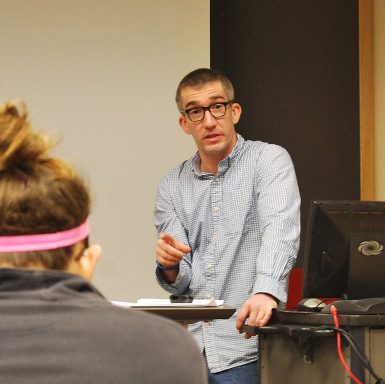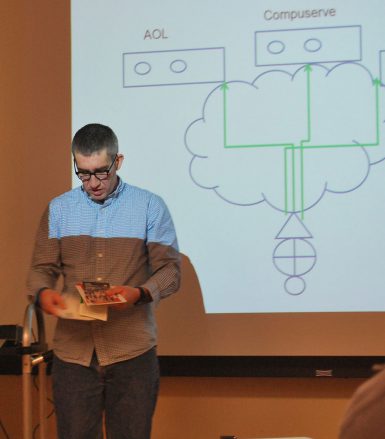Mailland discusses two-sided business model for ISPs, access

In the wake of the FCC’s Feb. 26 vote to enact rules that could lead to net neutrality, a Media School professor cautioned that without the FCC’s net neutrality rules, the Internet will start to look like it did in the 1980s.
Assistant professor Julien Mailland presented “From Two-side Pricing to Gated Communities: Welcome Back to the Eighties,” during the Brown Bag Seminar series Friday. Mailland’s research looks at the similarities between the Internet service providers preferred two-sided business model and what early closed networks looked like in the 1980s and early 1990s.
Mailland worked with professors Barbara Cherry and Matt Pierce to lobby for the net neutrality rules and conducted research on the topic to justify the FCC’s proposed rule changes.
Feb. 26, the FCC voted to enact rules to reclassify broadband Internet as a Title II telecommunications provider, or common carrier, and protect openness. The FCC’s proposed rules would allow consumers to access Internet content without Internet service providers being able to prioritize content, according to the agency.
While major content producers like Netflix, YouTube and Etsy heralded the net neutrality rules, Mailland said it’s more important to consider the little guys, like bloggers and activists on social media.
Mailland said the current narrative around net neutrality ignores that the Internet is a publicity platform for individuals and nonprofit creative endeavors.
“It’s an electronic soapbox,” he said.
The idea of gated communities goes back to the 1980s when people went online but not the Internet, Mailland said. If people subscribed to AOL, people saw only content that company approved, he said.

A two-sided business model leads to creating the same type of a closed online ecosystem, Mailland said.
Currently, people pay a fee to access the Internet, Mailland said. That means he pays his ISP so he can post content on his blog, Mailland said, and his parents in France pay their ISP to read his posts.
Under a two-sided pricing model, Mailland said he’d have to pay his ISP and the ISP in France to make sure his content can be seen by his parent.
“This is called censorship,” Mailland said, because prior authorization is needed for publicity.
Two-sided pricing cannot be implemented without blocking content, Mailland said. He said it’s price-based discrimination because producers can’t distribute their work without paying the ISPs to not drop them.
Mailland said two-sided pricing creates isolated online islands. The Internet isn’t about Netflix and YouTube, he said, but is about people who use it to publish their opinions and works.
“It is about creating an electronic Dunn Meadow,” Mailland said.
Pierce asked if allowing the government regulation of the Internet wouldn’t create a creep into more controls on content.
Mailland said the FCC’s rules say only that ISPs can’t discriminate by having people pay for their content to not be dropped. He said it’s not a content-based regulation.
More:

